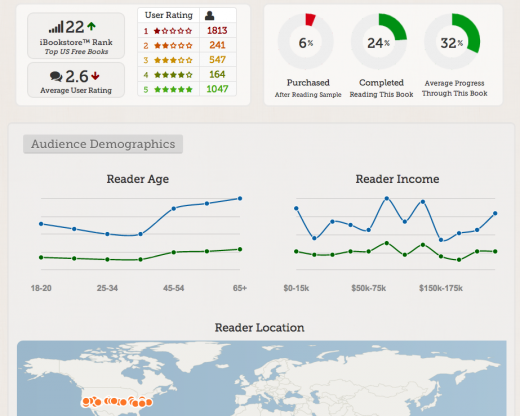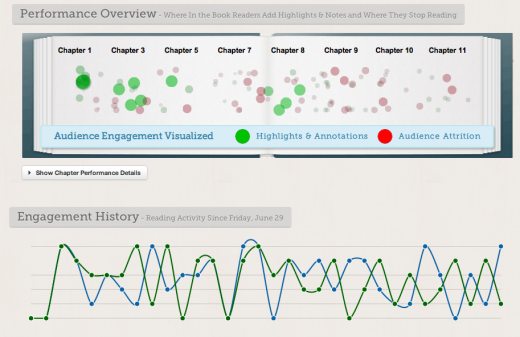
If an online business wants to know the behaviour of (potential) customers, there are a plethora of tools out there to help them know. There’s Google Analytics, for starters.
With such tools, they can glean crucial data, such as where customers decide to abandon the check-out process, or which sections receive the most page-views. This information can then be used to make changes – be it a complete website overhaul, or merely a few design tweaks to ease customers through a transaction.
But what about books? With eBooks really starting to thump their print-based counterparts, this offers a real opportunity for publishers to monitor readers’ behaviour. We’re not talking about when they buy a book at an online checkout – we mean as they’re actually reading a book.
This is where Hiptype comes into play, and it hopes to cement its place as the de facto ‘Google Analytics for eBooks’.
Here’s Hiptype
Hiptype was founded in early 2012 by James Levy and Sohail Prasad, before eventually joining as a member of the Y Combinator batch in May. Prior to founding Hiptype, Levy and Prasad were involved in building other data-driven products at young startups such as Chartboost, Turntable.fm (see previous coverage) and, erm, Google.
The problem Hiptype is setting out to solve is this: How can publishers and authors delve deep into the DNA of a successful book? Why are books such as Fifty Shades of Grey so popular, and what subtle constructions of said books really appeal to readers?
What we’re talking about here is a marketing analytics platform to help publishers, authors and others with a vested interest in the eBook realm, understand who their readers are and how they engage with their books. Audience insights, in other words:

“Data is going to completely transform the business of book publishing,” says Levy, who’s the company’s CEO. “It’s a very exciting time to be in the publishing business, where things are getting better for authors, readers, retailers, and the publishers that are able to adapt.”
It is true that eBook sales are trumping print sales in pretty much all trade categories, including novels. And it’s interesting to see analytic tools such as Hiptype come to the fore
How it works
Levy tells us that there are already books live with Hiptype collecting data. And for the record, Hiptype is attached to each book, rather than integrated with an e-reader device or app – it captures demographic information about engagement that’s designed to help authors and publishers make better books.
So, what kind of data could possibly be of use to publishers? “How readers are progressing through a book and where they tend to drop off, that’s one of the things publishers are particularly interested in,” says Levy. “Especially the education publishers we’re working with.”
Chapter-by-chapter, publishers and authors can see how readers engage with a book – how many pages they read in one go, how often they put it down, how long they spend on each page, and so on:

Hiptype is aiming big, focusing on the big retailers, and making itself available across multiple platform as opposed to focusing on one particular market. “We want to build a data-driven book publishing platform,” says Levy. “We want to make it as easy as possible for authors and publishers to get the insights that they need, to make better books and have more success.”
But wait a minute – won’t readers really hate having all that data collected about them? My instinct says yes – surely we must be able to sit alone in a room and read a book without having information collected about us?
“All the data we collect is totally anonymous, and only shown as an aggregate,” counters Levy. “Publishers aren’t really interested in what individual readers are doing, and we’re not going to show them that kind of data. We’re only going to show a high-level overview, and we also let readers opt-out of the data collection from the book itself.”
So how can you opt out? Well, it will depend on the book, but it seems there will be a section that says something like anonymous usage statistics enabled, which lets readers click for more information and, ultimately, opt out if they wish.
Hiptype is designed to work on all the popular e-reading platforms, such as Kindles, Nooks, Kobos, iBooks, but not Web-based incarnations such as Nook Web.
“We love books,” says Levy. “And we’re excited to revolutionize the industry with data-driven publishing.”
I’ve a sneaking suspicion we’ll be hearing a lot more about these guys in the future.
➤ Hiptype,
Get the TNW newsletter
Get the most important tech news in your inbox each week.




